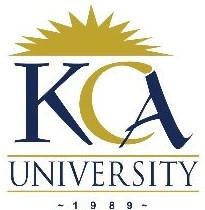 UNIVERSITY EXAMINATIONS: 2010/2011
UNIVERSITY EXAMINATIONS: 2010/2011
SECOND YEAR EXAMINATION FOR THE DEGREE OF BACHELOR OF
SCIENCE IN INFORMATION TECHNOLOGY
BIT 2208: PRINCIPLES OF DATA COMMUNICATIONS
DATE: AUGUST 2011 TIME: 2 HOURS
INSTRUCTIONS: Answer question ONE and any other TWO questions
Question One
a) Explain the four basic elements of networks (4 Marks)
b) State four consequences of a network security breach. (4 Marks)
c) Explain the three most common causes of congestion in a network. (6 Marks)
d) Standards ensure interoperability between devices made by different manufacturers. Internationally,
the three key organizations influencing WLAN standards are ITU-R, IEEE and Wi-Fi Alliance.
Discuss the roles of each of these organizations as standards bodies for WLANs. (6 Marks)
e) How do new communications solutions redefine business processes today? (5 Marks)
f) Describe briefly the factors that should be considered when selecting a WAN service. (5 Marks)
Question Two
a) (i) Define the term convergence as used in Computer networks (1 Mark)
(ii) Converged networks have existed for a while now, but were only feasible in large enterprise
organizations. Why? (4 Marks)
(iii) Why is it difficulty for some organizations to make a decision to move towards converged
networks? (2 Marks)
b) The TCP/IP model describes the functionality of the protocols that make up the TCP/IP protocol
suite. These protocols, which are implemented on both the sending and receiving hosts, interact to
provide end-to-end delivery of applications over a network. Describe the steps involved in a
complete communication process. (7 Marks)
c) Explain any six benefits of the OSI Model (6 Marks)
Question Three
a) In comparison to cables, describe three major characteristics of RF. (6 Marks)
b) State four major differences between WLANs and wired Ethernet. (4 Marks)
c) Imagine two client stations that both connect to the access point, but are at opposite sides of its
reach. If they are at the maximum range to reach the access point, they will not be able to reach
each other. So neither of those stations sense the other on the medium, and they may end up
transmitting simultaneously. This is known as the hidden node (or station) problem. How does
CSMA/CA resolve this problem? (6 Marks)
d) Define the following terminologies as used in WLANs
(i) Beacons (1 Mark)
(ii) Probes (1 Mark)
(iii) Authentication (1 Mark)
(iv) Association (1 Mark)
Question Four
a) Elaborate on the three sources of latency in a computer network. (6 Marks)
b) What are the benefits of a converged network? (4 Marks)
c) The description of a frame is a key element of each Data Link layer protocol. Data Link layer
protocols require control information to enable the protocols to function. List four things that this
control information may tell. (4 Marks)
d) State the functions of any six of the most widely known and implemented TCP/IP application layer
protocols. (6 Marks)
Question Five
a) Discuss how user communities’ analysis affects the deployment and effective usage of
communications resources in an organization. (9 Marks)
b) Describe briefly the following forms of communication:
(i) Instant Messaging (2 Marks)
(ii) Weblogs (blogs) (2 Marks)
(iii) Wikis (2 Marks)
(iv) Podcasting (2 Marks)
c) State the three basic operations of reliability at the Transport layer. (3 Marks)